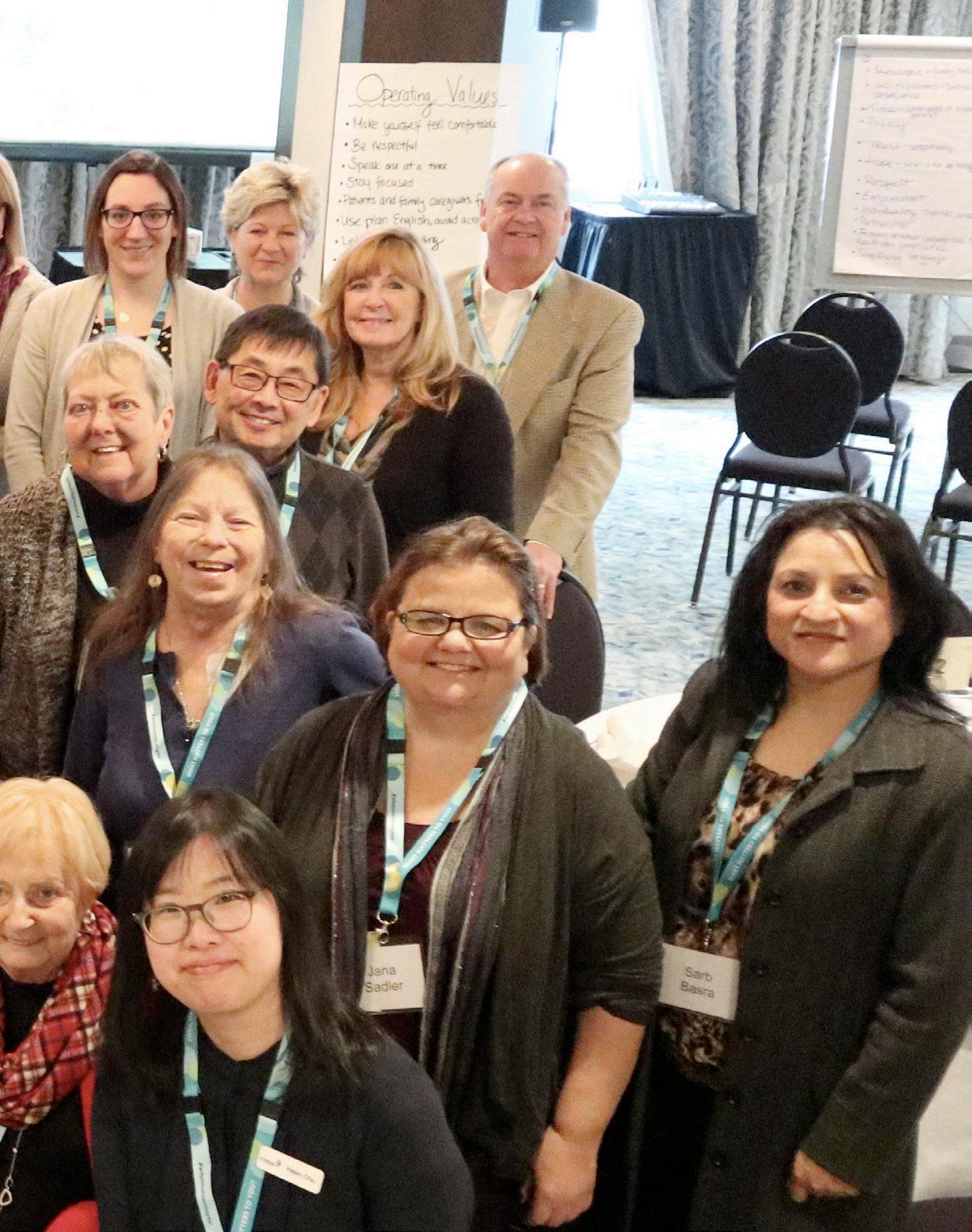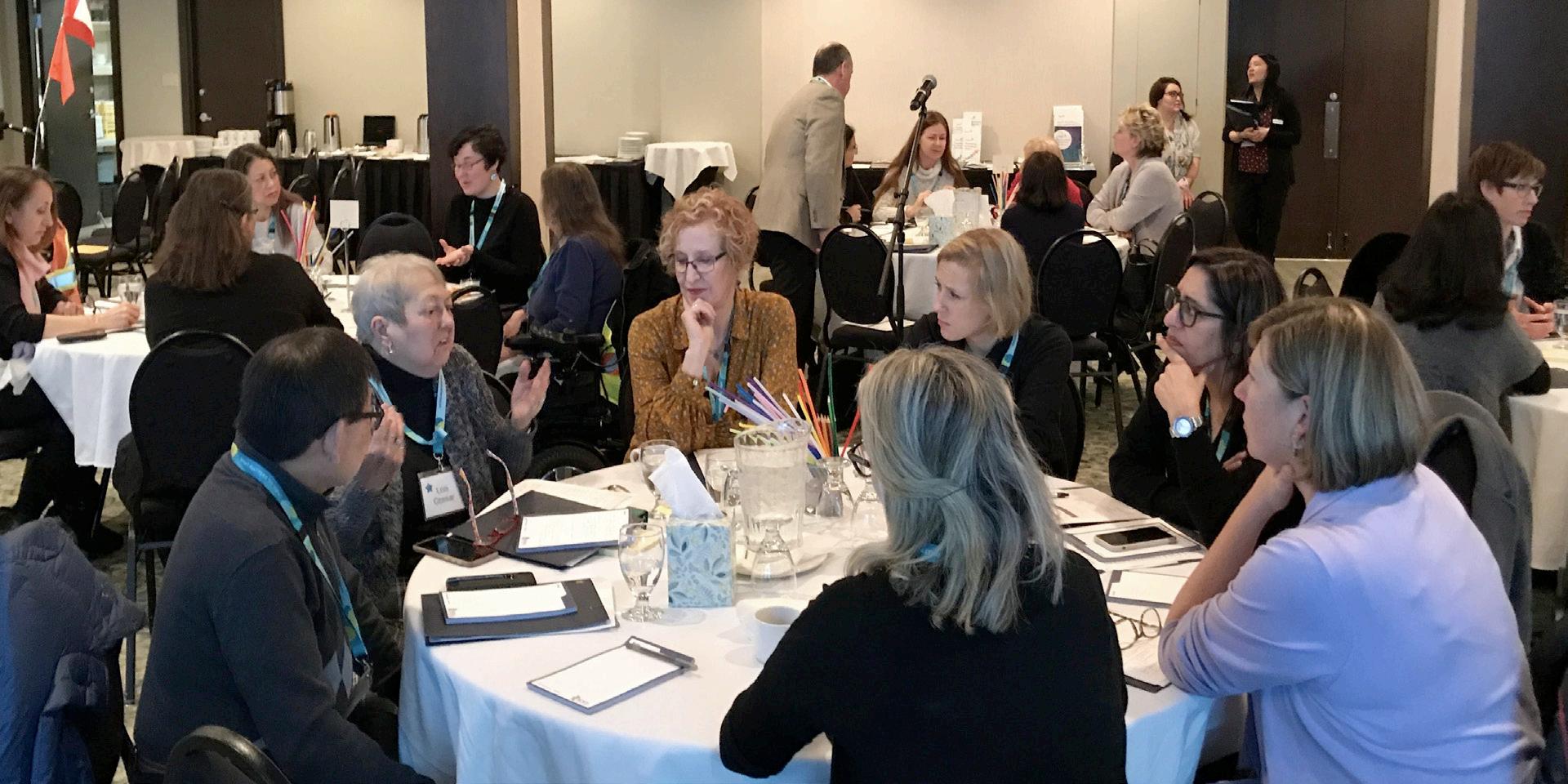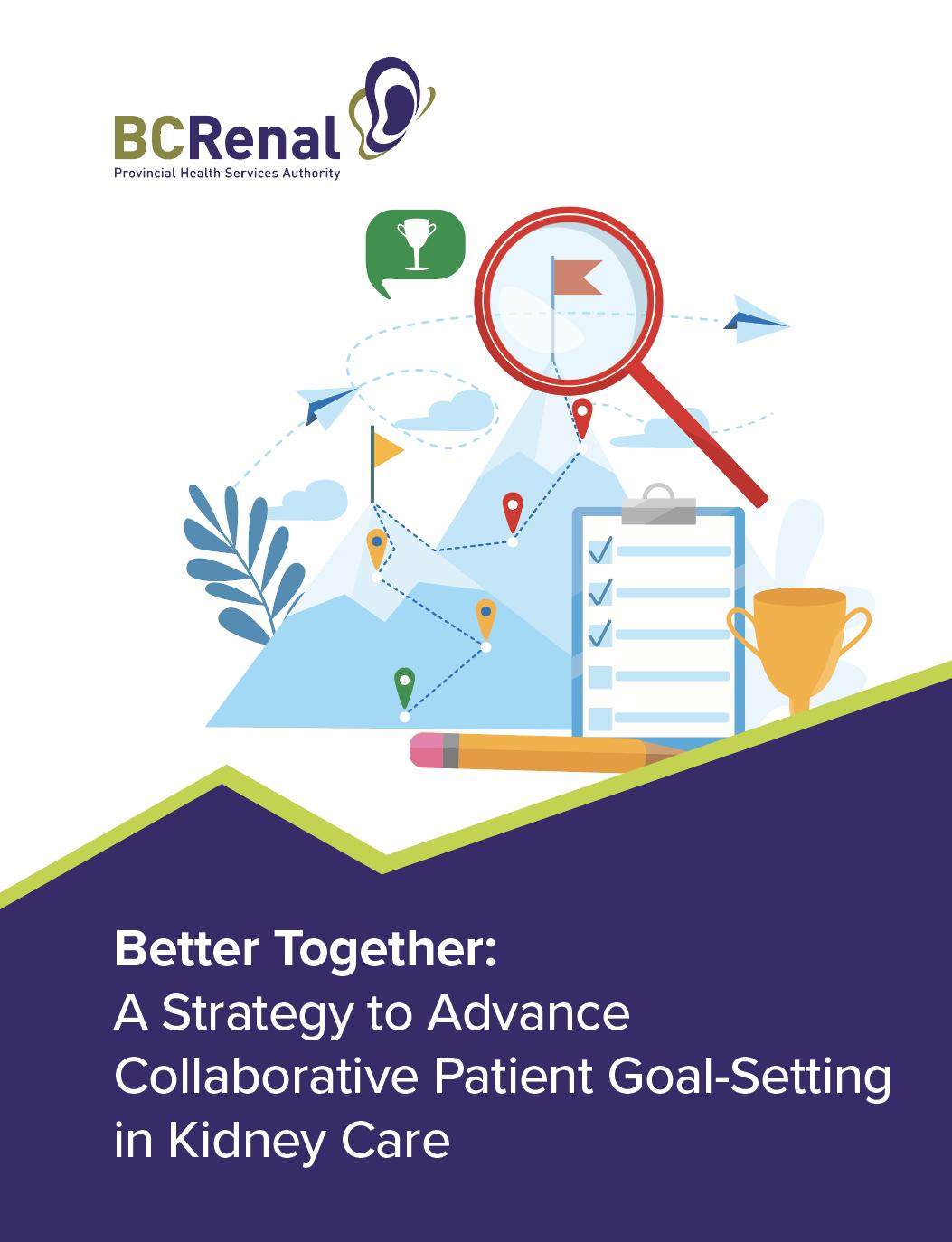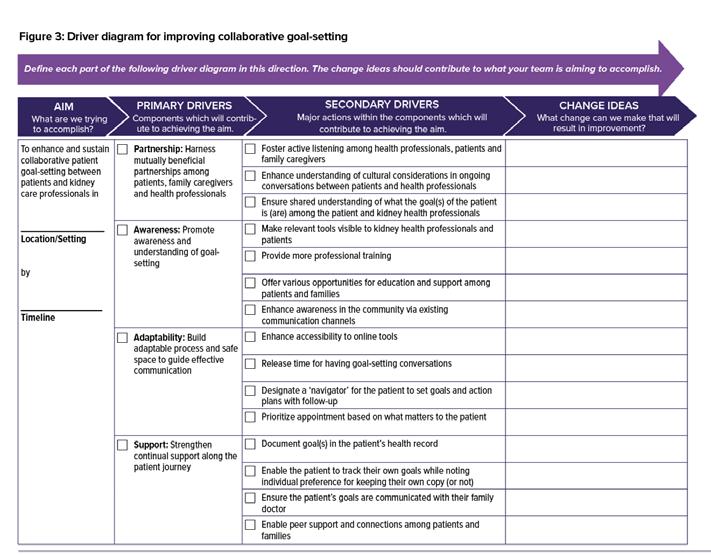
3 minute read
Patient Partners & Patient Engagement

Patient goal-setting workshop hosted by BC Renal, February 2020
Advertisement
New Strategy and Tools Aim to Empower Patients Through Goal-Setting

In February 2020, BC Renal convened a group of health professionals, patients and family members living with chronic kidney disease and representatives of The Kidney Foundation - BC & Yukon Branch for an action-planning workshop. The purpose was to discuss the important topic of how to collectively advance patient goal-setting across our provincial kidney network.
What is patient goal-setting? Patient goal-setting is a key element of patient selfmanagement. It involves gathering information and setting specific goals between health professionals and the patient for living well. The focus is on what matters to the patient. Goal-Setting History Over the past decade, BC Renal consistently identified goal-setting as an area of improvement across all modalities of kidney care and all kidney programs. In response, BC Renal and the kidney programs collaboratively organized a series of focus groups in 2019 and the February 2020 workshop.
The process involves a series of conversations to: • understand what matters to the patient • set an overarching medical and/or non-medical goal • break it down into shorter-term goals over time that have realistic and concrete action plans, and • follow up and provide support if needed.
Why is it important? Setting a collaborative goal that focuses on what matters to the patient is an important means for empowering and motivating patients in managing their chronic condition. Since goal-setting is done in close collaboration with the patient’s kidney care team, this process also allows health care professionals to better understand their patients and provide more tailored care.
New strategy document serves as a practical guide The February 2020 action-planning activities resulted in a new patient goal-setting document, which was formally introduced at BC Kidney Days in November. “Better Together: A Strategy to Advance Collaborative Patient Goal-Setting in Kidney Care” can be used by care teams in kidney programs as well as patients to take concrete action in improving patient goal-setting in various ways.
Worksheet provides step-by-step tool A worksheet that serves as a step-by-step tool includes the key improvement ideas from the provincial workshop and is available within the strategy document, and as a stand-alone tool. Additional tools that are part of a “toolbox” are described and linked in the strategy document. It’s helpful for patients to have goals to achieve – from adjusting medications to creating an exercise plan to talking with a therapist – to improve their lives and living with their illness.
~ Jana Sadler, BC Renal Patient Partner


My hope is that the framework offers a document that is not only easily accessible electronically with links to key information but that it also stimulates further internal collaboration and discussion towards actionable outcomes.
~ Paula Hann, Program Director, Renal Services, Interior Health Authority
Ministry & Accreditation Alignment Collaborative goalsetting aligns with the principles of person- and family-centred care and corresponds with the BC Ministry of Health and Accreditation Canada’s approach.
Patient & Family Engagement Working Group: What does it do?
Strives to put patients and families at the centre of a kidney health system that includes their voices and perspectives in the planning and improvement of kidney care.
Who are patient partners?
A patient partner is a patient, or family member/caregiver of a patient, who:
family members
has lived experience with (or is at risk of) kidney disease is interested in making a difference in kidney care is open to sharing their experience and working with health care professionals and other partners.
Did you know?
Patient partners have told us many patients prefer to be described as “people living with kidney disease” rather than “kidney patients” when possible. This makes a lot of sense to us. We strive to use this language when space permits and to use “kidney patients” or “patients” only when shorter terms
After 1 year, we have:
patients/
are required.
in the network active patient partners
engagement opportunities patient partners completed an orientation
When surveyed, 92% of patient partners:
felt that they were able to express their ideas comfortably
felt that their ideas were heard
were satisfied with the engagement opportunities
Web info & resources: BCRenal.ca ⊲ Health Info ⊲ Managing My Care ⊲ Self-Management BCRenal.ca ⊲ Health Professionals ⊲ Clinical Resources ⊲ Self-Management






